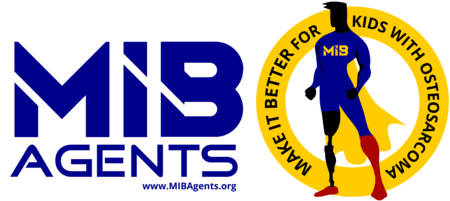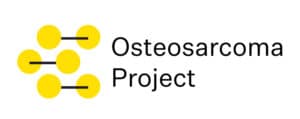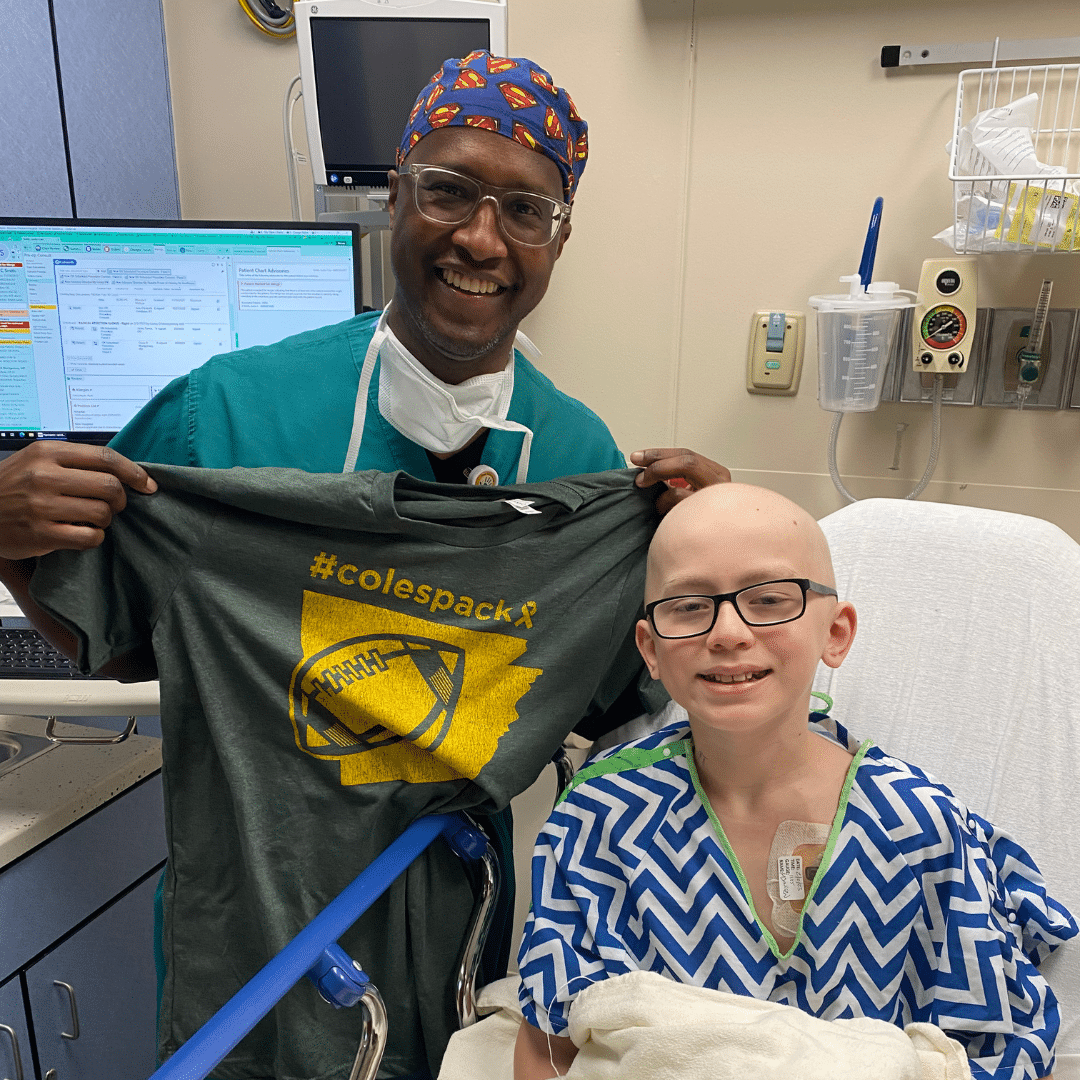Patient Resources
OSI Connect
Osteosarcoma Answers and Assistance
OSI Connect is our free, easy-to-use resource for patients who have been diagnosed with osteosarcoma, or suffered a relapse after initial treatment. These events are devastating and overwhelming, and start a desperate pursuit to gain knowledge and understanding. Often people turn first to the internet but encounter an avalanche of search results with no way to assess their accuracy, quality, or applicability. This resource helps patients and their families find answers to their questions from an experienced, knowledgeable osteosarcoma physician about all aspects of the disease, including treatment, possible side effects, and advice for getting the most out of your visits with your treating physician. Se habla español.
SEARCH FOR
A Clinical Trial
The Osteosarcoma Institute is pleased to connect interested parties with CareBox, a free and confidential trial matching service that will help guide you through a search and referral process to find a clinical trial that may be right for you. This matching system shortens the clinical trial search process from weeks to minutes, helping users identify clinical trials with eligibility criteria that match a patient’s specific diagnosis, stage, symptoms, and treatment history. Fill out your contact information below, and a Clinical Trial Navigator will call you within one business day. Se habla Español.
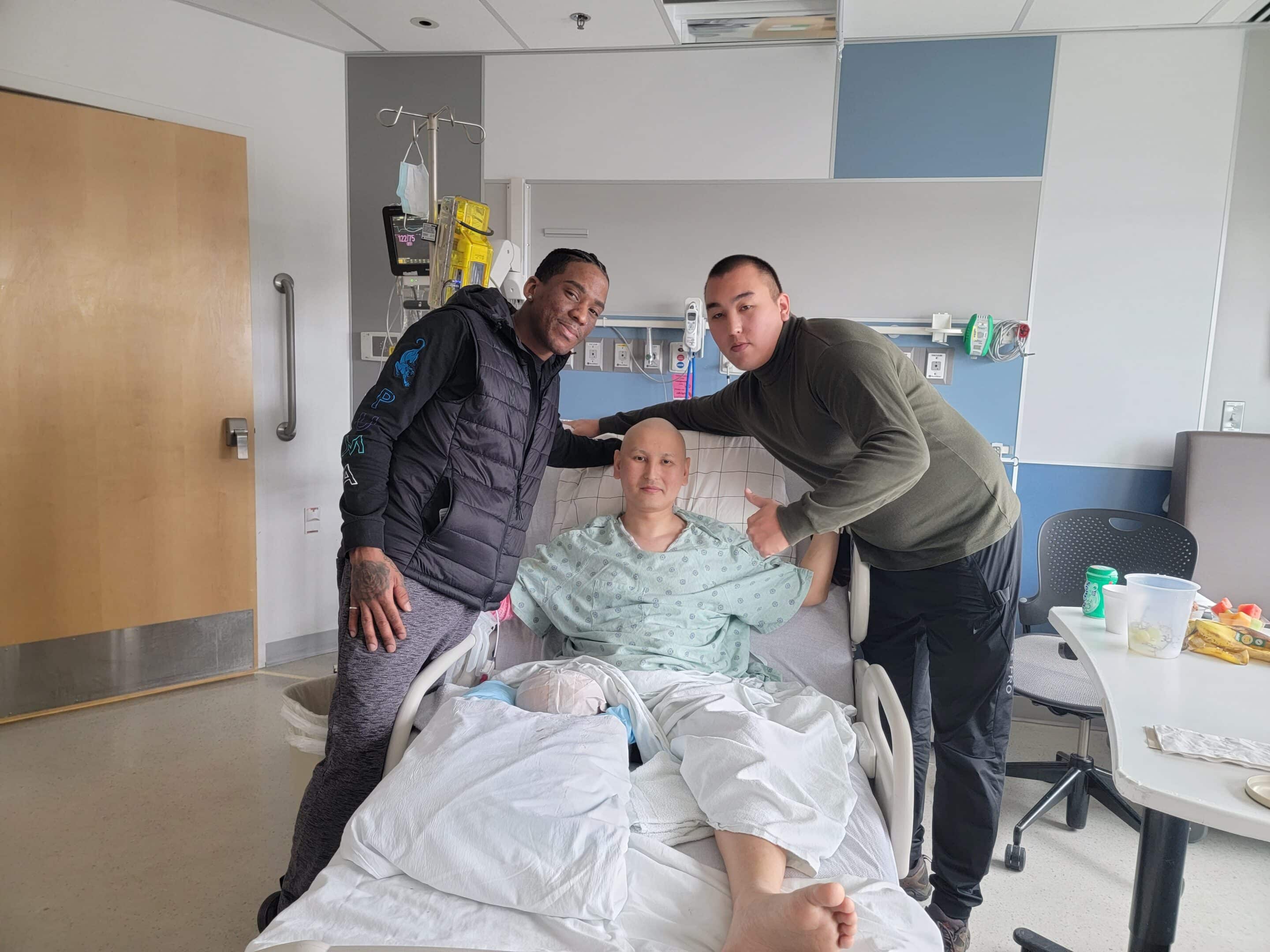
Funding Partnerships
There are a few different ways to raise funds for the Osteosarcoma Institute in honor or in memory of a loved one. GoFundMe is a popular option to encourage your friends to give towards osteosarcoma science. Additionally, making a fundraiser on Facebook is easy, and it makes a big difference!
To take a bigger step in osteosarcoma advocacy, you can create your own osteosarcoma science fund with our support and infrastructure. Through a Partnering for Progress fund, we help you determine a research study or trial to support, and we handle many of the logistics, allowing you to focus on reaching out to friends and family to make a difference for osteosarcoma patients everywhere. If you are interested in learning more about Partnering for Progress, please email giving@osinst.org and our Development Manager, Vanessa Peterson, will be in touch.







Advocacy Collaborations
The Osteosarcoma Institute strives to raise awareness and galvanize advocacy of osteosarcoma in communities across the United States. From our wide-ranging resource library, below are a few resources for osteosarcoma patients and families that can offer a helping hand in the cancer journey.
The Beautifully Flawed Retreat was designed to unite and inspire young women ages 14-25 who face limb differences or the loss of a limb; to uncover the beauty in every story. It includes expert advice, instruction and practical health and wellness tips that specifically focus on limb differences from onsite doctors, trainers and nutrition specialists.
Osteosarcoma Now was developed with the sole purpose of supporting osteosarcoma patients and their families throughout their cancer journey, wherever they live in the world. Their curated clinical trial database gives patients the tools and information to explore new treatment options and make decisions that are right for them. Each trial has been summarised in accessible language to give a clear picture of its aims, what it involves and who to contact about the trial.
At Lazarex Cancer Foundation we improve the outcome of cancer care, giving hope, dignity and life to advanced stage cancer patients and the medically underserved by providing assistance with costs for FDA clinical trial participation, identification of clinical trial options, community outreach and engagement. We provide resources for cancer patients who have been told they have no other options, but who are not yet done with their journey in life and refuse to give up.
MIB Agents is a leading pediatric osteosarcoma nonprofit dedicated to Making It Better for our community of patients, caregivers, doctors, and researchers through programs, education, and research. OsteoBites is a weekly webinar and podcast where Osteosarcoma Experts share their research, hope, and innovation.
Osteosarcoma Project by Count Me In is stewarded by the Broad Institute of MIT and Harvard, the Dana-Farber Cancer Institute and Emerson Collective. The Osteosarcoma Project has been designed and implemented collaboratively with osteosarcoma patients, advocates, caregivers, loved ones, cancer researchers, and clinicians. The goal of this project is to generate a large dataset that includes genomic, clinical, molecular, and patient reported information that can be shared with the biomedical community in order to accelerate discoveries and better therapies for this disease.
The Osteosarcoma Collaborative brings together data, researchers, patients and families to find new cures for osteosarcoma through advocacy, fundraising, education and awareness regarding the disease. They manage the Osteosarcoma Information Facebook page which was created for discussions focused on osteosarcoma treatment, clinical trials, and scientific research.

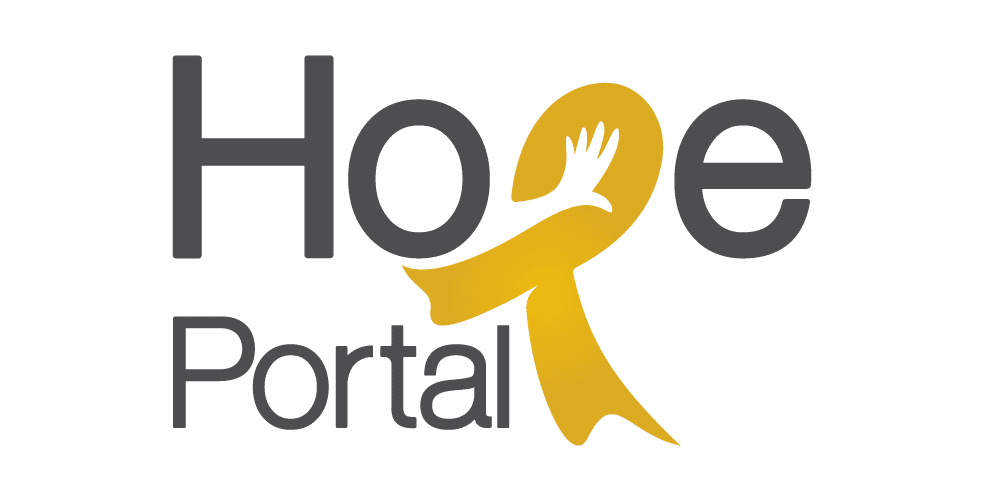
The Hope Portal is a curated, community-driven directory of organizations in childhood cancer. Visit their website to find helpful organizations by selecting support categories, diagnoses, and/or locations that are relevant to you. The information on the Hope Portal is verified by members at the Coalition Against Childhood Cancer.
Osteosarcoma in Canines
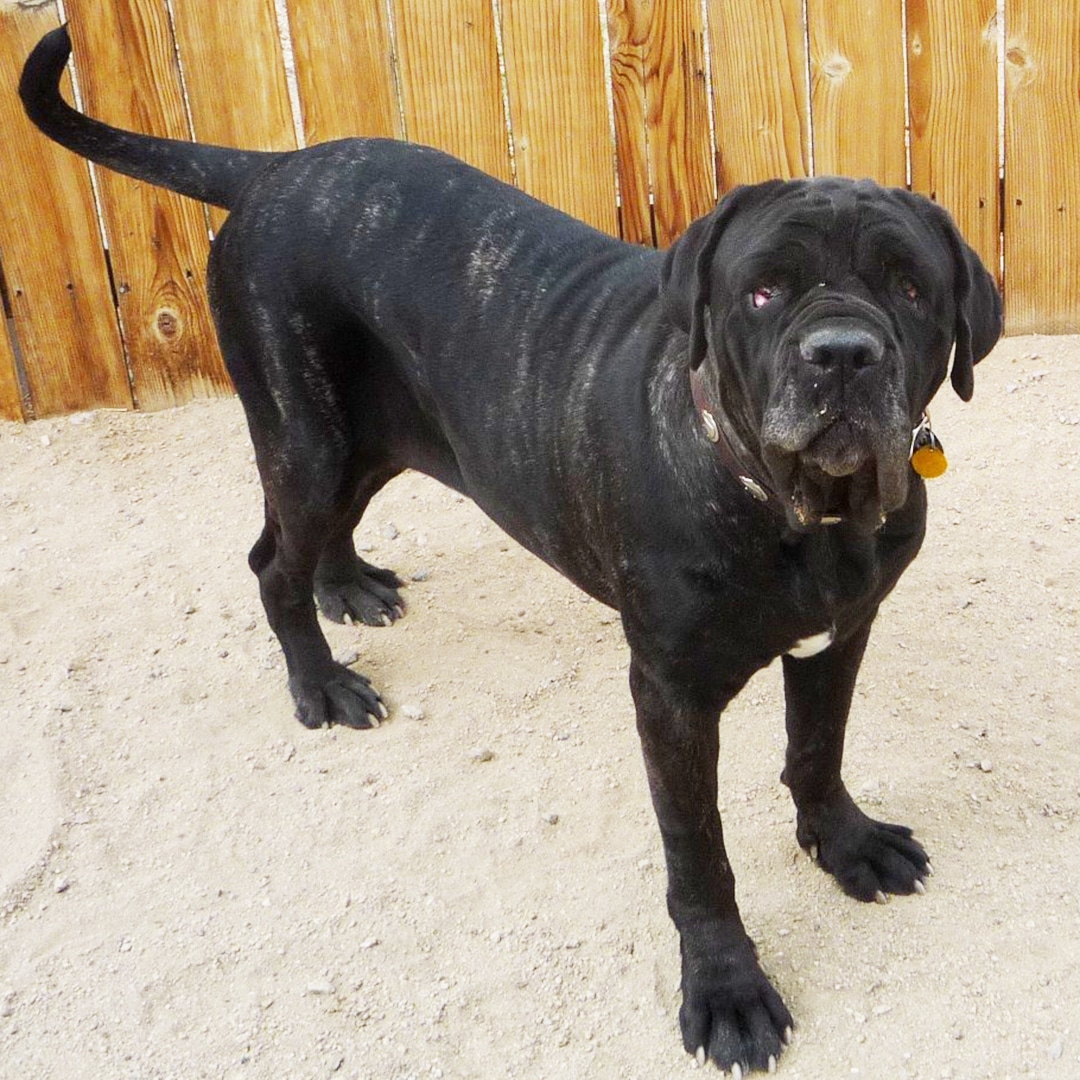
Robyn and Mack’s Beloved Mastiff, Arianna
Canine Osteosarcoma Background
The problem of cancer in pet dogs is significant. In the United States approximately 1 million pet dogs will be diagnosed with cancer each year. Cancers that develop in pet dogs share strong similarities with human cancer patients. Tumor initiation and progression are influenced by similar factors in both human and canine cancers, including age, nutrition, sex, reproductive status, and environmental exposures. The spectrum of cancers seen in pet dogs is as diverse as the cancers seen in human patients. Not surprisingly the genetic events that are understood to be associated with cancer development and progression in humans are also the same as those that occur in canine cancers. Furthermore, the conventional treatments that are effective in the treatment of human cancers are for the most part effective in the treatment of pet dogs cancers. The biological complexity of cancers in pet animals is high and emerges from a similar intra-tumoral (cell-to-cell) heterogeneity seen in human cancer patients. A natural consequence of this heterogeneity is the acquisition of resistance to therapy, recurrence of disease, and spread or metastasis to distant sites. In these ways the problem of cancer in pet dogs is identical to the problem of cancer in people.
Helping Patients on Both Sides of the Leash
An opportunity exists to help both pet dogs and people, particularly children with cancer. This opportunity integrates clinical trials that assess new drugs for the benefit of both canine and human cancer patients. The goal of this integrated effort is to speed the development of new cancer treatments by allowing questions to be answered in both dogs and humans rather than humans alone. The formal integration of studies that include pet dogs with cancer has recently begun and it is becoming a more common part of innovative cancer drug development.
Similarities in Canine and Human Osteosarcoma
Of the cancers that occur in both pet dogs and humans, osteosarcoma is perhaps the most similar. Osteosarcoma is the most common primary tumor of bone in both pet dogs and children. Pet dogs develop osteosarcoma at similar sites as pediatric patients, with identical microscopic features, and response to traditional treatment regimens such as surgery and chemotherapy. Most importantly, this cancer is associated with a high risk for spread from the bone to the lungs. An important difference between the species is that there are more than 10,000 new cases of osteosarcoma diagnosed in dogs each year, whereas there are approximately 800 osteosarcoma diagnoses made in people each year. New treatments are needed for this highly aggressive cancer in both species.
Resources
Canine Clinical
Trial Finder
Canine Clinical Trial Resources
Find a Veterinary Oncologist in your area
Frequently Asked Questions
-
What is osteosarcoma?
Osteosarcoma is a type of bone cancer that originates in cells of the bone. The word “osteosarcoma” comes from the Greek words sarc, meaning fleshy substance, and oma, meaning growth. Osteo adds bone-like to the word sarcoma. It can occur anywhere along the skeleton, but the most common sites are in longer bones, for instance around the knee (distal femur and proximal tibia) and shoulder (proximal humerus).
-
How common is osteosarcoma?
Osteosarcoma is rare — only around 1,000 people are diagnosed in the United States each year. Osteosarcoma most commonly occurs in children, teenagers and young adults between the ages of 10 and 30. It is slightly more common in boys and young men. There is a peak incidence of osteosarcoma during the adolescent growth spurt. It is very rare in children under 5 years old.
-
What causes osteosarcoma?
The exact cause is still unknown. Osteosarcoma develops when healthy cells responsible for making new bone experience changes in their DNA. These DNA changes tell the cells to make abnormal bone. This results in a tumor that invades and destroys surrounding healthy bone and surrounding tissue.
-
Can osteosarcoma be prevented?
It cannot be prevented. However, there are certain risk factors to be aware of. Osteosarcoma risk factors include:
● Bone disorders (Paget’s disease and fibrous dysplasia)
● Exposure to radiation (for example, previous cancer treatment)
● Rare, inherited disorders (hereditary retinoblastoma, Bloom syndrome, Li-Fraumeni syndrome, Rothmund-Thomson syndrome and Werner syndrome) -
What are the symptoms?
People with osteosarcoma may have a variety of symptoms, including:
● Pain in and around a bone that becomes persistent and severe over time
● Swelling near a bone
● Limping and/or inability to lift or use a limb
● Bone injury/fracture from minor trauma
If you or your child is experiencing any of the above symptoms, contact your doctor. -
How is osteosarcoma diagnosed?
The diagnosis of osteosarcoma can only be definitively made with a biopsy of the affected area. Thanks to advanced imaging technology, doctors can see — with precision — where the abnormality is located in the body and help guide the biopsy. Once a biopsy confirms the diagnosis of osteosarcoma, a variety of other tests may be ordered to further determine the extent of the tumor. These may include:
● X-Ray
● Computed tomography (CT) scan
● Magnetic resonance imaging (MRI)
● Positron emission tomography (PET) scan
● Additional blood tests
-
Can osteosarcoma spread?
Yes, osteosarcoma can metastasize, or spread, to other areas of the body, most commonly to the lungs. Osteosarcoma that spreads to the lungs happens when tumor cells travel to the lungs through the bloodstream. But since our blood always travels to the lungs to provide oxygen to our blood (and not all cancers spread to the lungs first), there must be additional reasons that osteosarcoma is so prone to lung metastases. This is an area of active research.
-
What are the treatment options for osteosarcoma?
Current therapy for osteosarcoma almost always includes the combination of a standard chemotherapy treatment and surgery. Most commonly, chemotherapy is given for several months before surgery and is continued after the patient has recovered from their surgery. The type of surgery performed can vary, but usually includes limb-preservation surgery. Following recovery from surgery, patients begin physical rehabilitation as part of their recovery process.
-
What should I know about clinical trials?
Clinical trials are available, if and when a patient recurs, following standard treatment. These trials provide patients access to novel treatment methods and drug therapies that are being developed to treat osteosarcoma. Depending on your individual case, you may be eligible to participate in one. The Osteosarcoma Institute is pleased to connect you with a free and confidential clinical trial matching service. Most clinical trials for osteosarcoma include newer “targeted therapy drug” or combinations with immunotherapy.
-
What are treatment side effects?
With any cancer treatment, there are side effects. This is also true for osteosarcoma treatment. Surgery often involves use of an internal prosthesis and rarely an external prosthesis. Physical therapy will be provided as you heal to help guide rehabilitation and ensure strength and movement are regained in the safest way possible. Chemotherapy side effects can include hair loss, nausea, fatigue, weakness, loss of appetite and weight loss. These side effects will resolve when chemotherapy is completed.
-
What is the outlook for people with osteosarcoma?
The outlook depends on many factors, including the location and size of the tumor, whether the cancer has spread and the person’s age and overall health. For more information on osteosarcoma survival rates, click here.
-
Why is more research needed?
There have been no improvements in survival of osteosarcoma patients for more than 30 years. Osteosarcoma is complex, and more research is needed. For a brief history of osteosarcoma treatment, click here. Areas of research include gene therapy, targeted drug therapy and immunotherapy.
